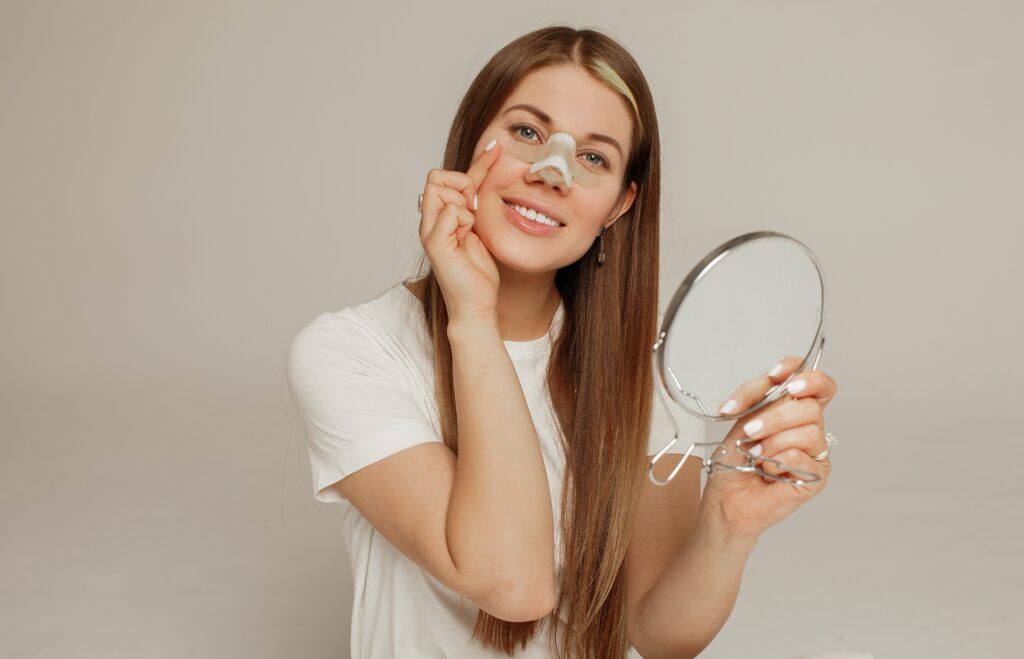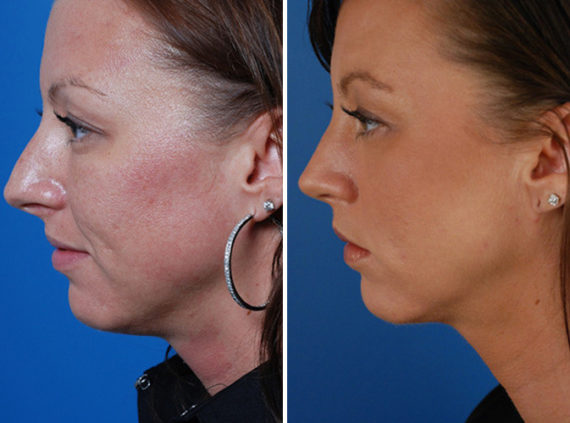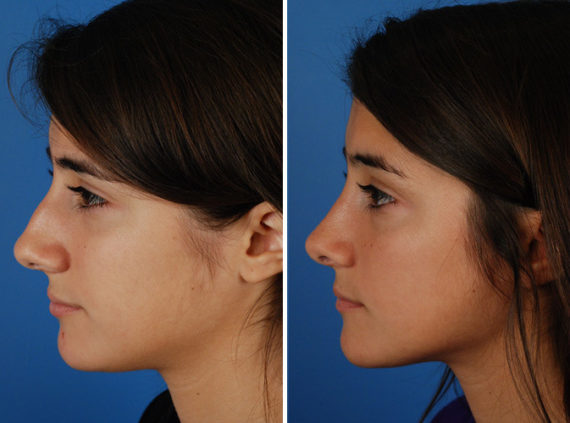Rhinoplasty, which is also sometimes called a “nose job,” is surgery that changes the way the nose looks or makes it work better. Even though the surgery is pretty common, many people are worried about getting scars afterward. It is possible to make these scars less noticeable with the right care and treatment.
After your nose surgery, your surgeon will provide you with a list of instructions. Adhere to them as carefully as possible to limit the danger of infection and promote healing. This includes avoiding any vigorous activity such as sports or exercise, sleeping with the head elevated, and avoiding contact with water for a few weeks after surgery.

Reducing Rhinoplasty Scars: Essential Tips
- Post-surgery scars are natural and influenced by factors like skin type, surgical method, and recovery care. Modern techniques and proper care can minimize visible scars.
- Open rhinoplasty may leave a small visible scar on the columella, while closed rhinoplasty involves internal incisions, resulting in hidden scars.
- Maintain a healthy lifestyle, avoid smoking and alcohol, and follow your surgeon’s pre-surgery instructions to promote healing and reduce scar risk.
- Proper wound care, sun protection, and a balanced diet are crucial for minimizing scars. Follow your surgeon’s guidelines for cleaning, applying ointments, and protecting your nose from UV rays.
- Use over-the-counter scar creams, prescription treatments, and non-invasive options like laser therapy to help reduce the appearance of scars and enhance the healing process.
The Significance of Rhinoplasty Scars
Scar tissue, whether apparent or internal, develops naturally after rhinoplasty. Skin type, surgical method, medical history, and recovery period can all influence scar tissue formation.
Revision operations, particularly with cartilage transplants, might result in extra scar tissue. However, modern procedures and careful post-operative care can reduce apparent scars.
During the meeting, the plastic surgeon will analyze scar possibilities and offer personalized scar management measures, such as recovery instructions and lifestyle changes.
Types of Rhinoplasty Scars (Open vs. Closed)
In an open rhinoplasty, the surgeon makes an external incision across the columella, providing a clear view of the nasal structure for a complex procedure like revision rhinoplasty. This method may result in a noticeable scar.
Conversely, a closed rhinoplasty involves internal incisions, leaving no visible scars but forming hidden scar tissue.
Factors That Influence Scar Formation
Several things can affect how scars form and look after a rhinoplasty (nose job). The way your body heals is a big part of whether or not a visible scar will develop.
Your age, skin type, and overall health all play a role in how well and quickly you heal. For example, younger skin usually heals faster and better than older skin, which means less chance of noticeable scars.
Are You Ready For A Consultation?
You are about to take the first steps towards improving your appearance and enhancing your self-image by learning about contemporary plastic surgery.
Preparing for Rhinoplasty Scar Management
Getting ready for your rhinoplasty can help reduce the chances of visible scars. During your consultation, your surgeon should talk about ways to manage scars and give you pre-surgery care tips. These might include advice on diet, medication, and lifestyle choices that can affect healing and scar formation.
Discussing Scar Management Options During the Consultation
Your surgeon will consider your skin type, medical history, and aesthetic goals to suggest the best surgical technique, such as a closed rhinoplasty or an open rhinoplasty for extensive nasal structure reshaping, which may leave a more noticeable scar.
Pre-Operative Care to Minimize Scar Risk
Understanding pre-operative care would help to reduce visible scars after rhinoplasty surgery. Maintaining a healthy lifestyle in the days leading up to your surgery is critical. Good nutrition, adequate hydration, and avoiding dangerous habits like smoking can all help to promote faster recovery and less apparent scars after surgery. You will be given thorough instructions, as well as a list of drugs and supplements to discontinue temporarily in order to promote healing and decrease scarring.
Tips for Minimizing Rhinoplasty Scars
Proper care of the incision site is important during the immediate post-operative period. Your surgeon will provide you with detailed instructions on wound care, and patients might be given additional instructions that are specific to their situation.
Proper Wound Care in the Immediate Post-Op Period
It is very important to take good care of your wounds after rhinoplasty so that they heal properly and reduce scar tissue formation. As you heal, your plastic surgeon will tell you things like how to keep the surgery site clean to avoid getting an infection and making the scars worse.
This means cleaning gently with a solution that the doctor prescribes, putting on ointments, and changing the dressings often. Don’t do things like heavy pulling that put stress on your blood vessels and raise your blood pressure. This will keep your body from healing properly and lower your risk of scar tissue.
Healthy Diet and Lifestyle Adjustments
A balanced diet and lifestyle changes can have a major impact on healing and scar tissue formation following rhinoplasty surgery.
A diet rich in proteins, vitamins, and minerals promotes wound healing and reduces scar tissue development. Consuming vitamin C-rich meals promotes collagen formation, which is required for healing.
Smoking and heavy alcohol use should be avoided since they can constrict blood vessels, limit blood flow to nasal tissues, delay healing, raise blood pressure, and increase the chance of bleeding, resulting in further scarring.
The Importance of Sun Protection
Sun exposure can make your scars more noticeable. UV rays boost melanin production in new scar tissue, leading to hyperpigmentation, which darkens the scars. To make your scars less noticeable, avoid direct sunlight, especially during peak hours. Use a high-SPF sunscreen on your nose and face, and consider wearing a wide-brimmed hat for extra protection.
Scar Massage Techniques
By gently pressing and using circular motions on the scar tissue, you can break down excess scar tissue and boost blood flow to the area. This helps the healing process and can make the scar less noticeable over time, leading to a better-looking nose.
Before & After Photos
* Each patient is unique and individual results may vary.
Scar Reduction Products and Treatments
Numerous products and treatments are available to help reduce the appearance of rhinoplasty scars.
Over-the-counter Scar Creams and Gels
However, there are numerous over-the-counter scar creams and gels available that can aid in managing your nose job scars. These products often contain silicone or onion extract, which have been shown to aid in scar reduction. They work by softening and flattening the scar tissue to reduce the appearance of visible scarring.
Prescription Options for Scar Management
Retinoic acid creams are a popular prescription treatment. The creams work by speeding up the change of cells, which can help scar tissue look less noticeable over time. They are especially good at getting rid of scars that show up when scar tissue builds up too much after rhinoplasty surgery. However, retinoid creams can irritate the skin and should only be used with the advice of a doctor.
Non-invasive Scar Treatments Like Laser Therapy
Laser therapy targets the scar tissue that occurs following rhinoplasty surgery. The laser’s radiation activates the body’s natural response, boosting the formation of collagen, a protein required for skin strength and elasticity. This scar revision option can help reduce redness, enhance texture, and ultimately aid in healing, making the scar less visible over time.
Long-Term Scar Care
Long-term care for rhinoplasty scars includes sun protection, a healthy lifestyle, and scar reduction products advised by the surgeon. Changes in scar color, texture, and size are natural during the healing process. If you notice any sudden changes or have any concerns, contact your surgeon.
Consult with a Qualified Surgeon for Personalized Advice
Schedule a consultation with a qualified surgeon like Dr. Agarwal or Dr. Holmes to manage and minimize rhinoplasty scars. They can provide personalized advice, wound care instructions, scar reduction product recommendations, and lifestyle adjustment guidance to aid the healing process.

